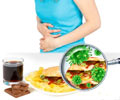Researchers recently examined the safety and quality of "wash techniques" used in the production of packaged produce.
Researchers recently examined the safety and quality of "wash techniques" used in the production of packaged produce. The study by United States Department of Agriculture (USDA), simulated washing techniques to learn more about how industry practices affect quality and safety of pre-cut lettuce.
Yaguang Luo, PhD, Research Food Technologist at the United States Department of Agriculture's (USDA) Produce Quality and Safety Laboratory, headed the study of produce wash techniques used in the commercial preparation of pre-cut fruits and vegetables. Luo explained that recent outbreaks of food-borne illnesses associated with the consumption of fresh-cut produce underscored the importance of ensuring food safety of these packaged convenience foods.He noted that washing the produce is an important step commonly employed by the industry to maintain the quality and safety of fresh and fresh-cut produce. Prior to the study, however, little information existed about how wash operation and water re-use techniques affected the water quality, the efficacy of sanitizers on the reduction of microorganisms, or the quality and shelf life of packaged products. Luo explained: "The main objective of the research was to examine the dynamic interactions among wash operation, water quality, and sanitizer efficacy and product quality. We investigated the effect of produce washing techniques, including simulated water re-use, and the ratio between product weight and wash water volume on the water quality and effectiveness of sanitizers used to reduce microorganisms."
The researchers found that procedures in which water was re-used during the washing process led to rapid accumulation of organic matter in wash water and compromised the efficacy of sanitizers. According to Luo, "It is generally known that water re-use can cause water quality loss. The value of this research is that it reveals the complex effects of the foreign matter that is washed from produce on water quality and product quality, and it provides specific information on how wash operation variables (such as re-use of the same tank of water with increasing amount of cut product being washed) affect the water quality." The study also demonstrated the direct effect of wash water quality on product quality.
Source-Eurekalert
SRM/P







